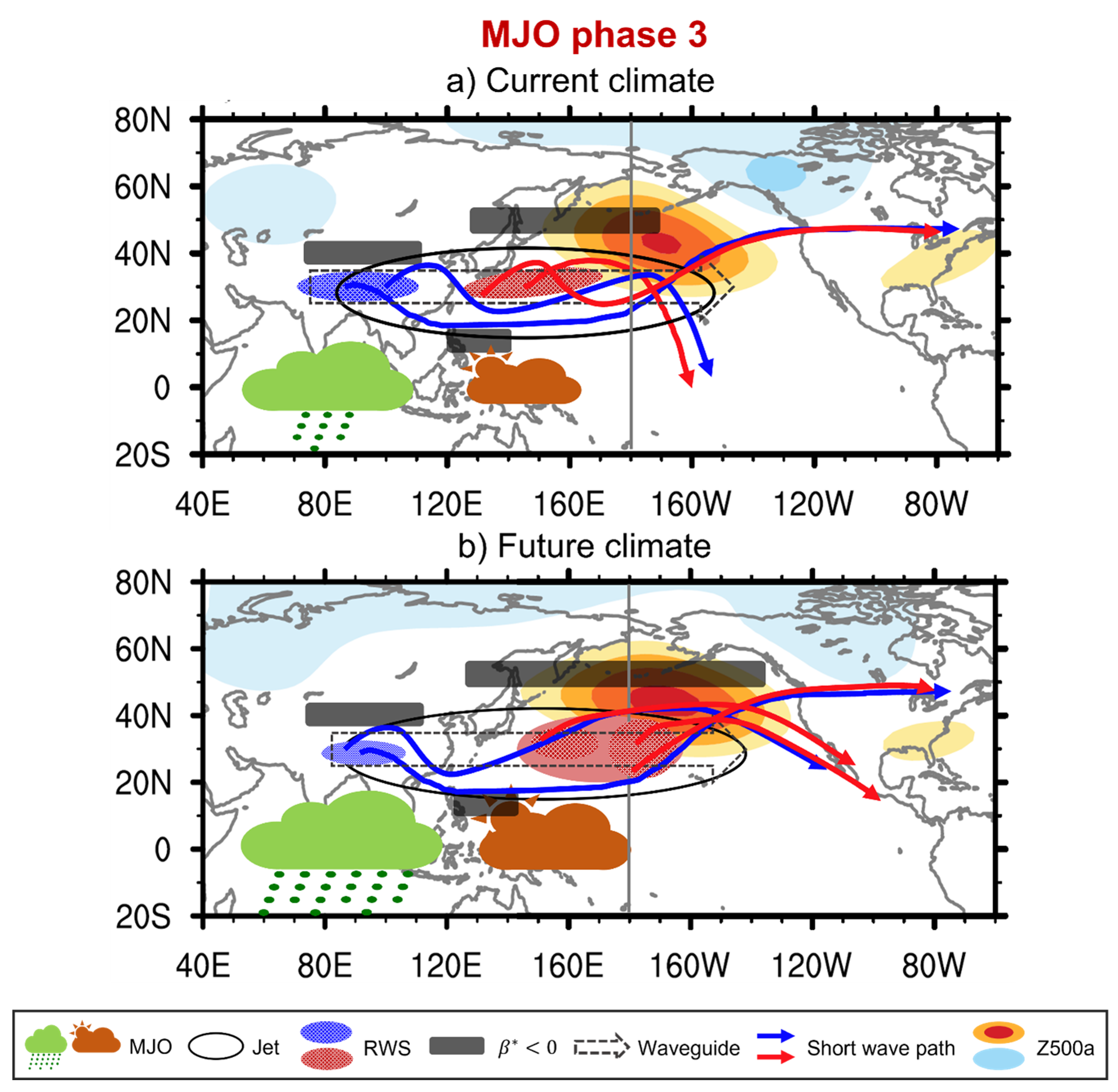CW3E Publication Notice
Future changes of PNA-like MJO teleconnections in CMIP6 models: underlying mechanisms and uncertainty
March 8, 2022
CW3E postdoc Dr. Jiabao Wang, along with co-authors Dr. Hyemi Kim (Stony Brook University professor) and Dr. Mike DeFlorio (CW3E researcher), recently published a paper in the Journal of Climate titled “Future changes of PNA-like MJO teleconnections in CMIP6 models: underlying mechanisms and uncertainty” (Wang et al. 2022). Wang and DeFlorio were supported by the California Department of Water Resources Atmospheric River Program Phase III.
The Madden-Julian Oscillation (MJO) is a tropical planetary-scale convectively coupled system traveling eastward from the Indian Ocean to the dateline with a period of approximately 30 to 60 days. It has significant global impacts on weather and climate systems including ridging events, atmospheric rivers, precipitation, and temperature through the generation of anomalous teleconnection patterns. In addition, the MJO is a key climate mode of variability in modulating subseasonal-to-seasonal (S2S) prediction skill of atmospheric rivers and ridging events over California.
This study examined the future changes in boreal winter MJO teleconnections (represented by anomalous 500-hPa geopotential height) over the Pacific/North America (PNA) region in 15 Coupled Model Intercomparison Project phase 6 models (CMIP6s) and found a robust and significant eastward extension (~4° eastward for the multi-model mean) of MJO teleconnections in the North Pacific. Other projected changes include more consistent teleconnection patterns between different MJO events, albeit with larger uncertainty. The authors then examined the mechanisms of the eastward teleconnection extension by comparing impacts of the future MJO and basic state changes on the anomalous Rossby wave source (RWS) that is important for teleconnection generation and stationary wavenumber and teleconnection wave paths that determine the teleconnection propagation using a linear baroclinic model (summarized in Figure. 1). The eastward extended jet in the future is found to play a more important role than the eastward-extended MJO in causing the eastward extension in MJO teleconnections. It leads to more eastward teleconnection propagation along the jet due to the eastward extension of turning latitudes before they propagate into North America.
The findings in this study have implications for the S2S predictability of MJO-related weather phenomena in the future climate. For example, they showed that MJO teleconnections may be more consistent between different MJO events in the future, leading to possibly more reliable S2S predictions for weather phenomena such as precipitation extremes and atmospheric rivers as they are highly modulated by MJO. The more eastward extension in MJO teleconnections, on the other hand, could lead to greater MJO impacts on the northeastern Pacific and North America.
Figure 1: The schematic diagram of dynamical processes (RWS and Rossby wave propagation) related to MJO teleconnections during MJO phase 3 in the (a) current and (b) future climate. Results are derived from the multi-model mean of CMIP6 historical and future runs. The vertical gray line indicates the “dateline”. The relative magnitude of each component is indicated by the difference in the thickness, length, or size of the graph. Note that the variables (e.g., anomalous RWS and propagation wave path) may not be entirely precise in location and pattern.
Wang, J., H. M. Kim, and M. J. DeFlorio (2022), Future changes of PNA-like MJO teleconnections in CMIP6 models: underlying mechanisms and uncertainty, J. Climate, https://doi.org/10.1175/JCLI-D-21-0445.1

